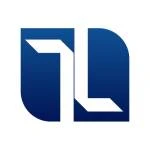In the evolving landscape of human resources, organizations are increasingly transitioning from traditional HR systems to advanced Core HR software solutions. This shift is driven by the need for greater efficiency, accuracy, and scalability in managing human capital. In this article, we will explore the fundamental differences between Core HR software and traditional HR systems, highlighting how modern HR technology is reshaping workforce management.
Understanding Core HR Software
Core HR software, often referred to as a Human Resource Information System (HRIS), is a centralized digital platform designed to manage essential HR functions. These include:
- Employee Data Management: Storing and organizing employee information such as personal details, employment history, and compensation records.
- Payroll Processing: Automating salary calculations, tax deductions, and benefits administration.
- Time and Attendance Tracking: Monitoring employee working hours, absences, and leave balances.
- Compliance Management: Ensuring adherence to labor laws and organizational policies.
Modern Core HR systems are typically cloud-based, offering real-time access, scalability, and integration capabilities with other business applications.
The Traditional HR Approach
Traditional HR systems primarily rely on manual processes and paper-based documentation. Key characteristics include:
- Manual Record Keeping: Employee information is stored in physical files or spreadsheets, making data retrieval time-consuming and error-prone.
- Paper-Based Payroll: Salary calculations and tax filings are done manually, increasing the risk of inaccuracies and compliance issues.
- Limited Automation: Routine tasks such as leave approvals and performance evaluations are handled manually, leading to inefficiencies.
- Decentralized Data: Information is often scattered across various departments, hindering comprehensive reporting and analysis.
While these traditional methods have served organizations in the past, they are increasingly inadequate in meeting the demands of modern businesses.
Key Differences Between Core HR Software and Traditional HR Systems
1. Efficiency and Automation
Core HR software automates routine tasks, reducing the administrative burden on HR personnel. For instance, payroll processing and leave management are streamlined through automated workflows, allowing HR teams to focus on strategic initiatives. In contrast, traditional HR systems require manual intervention at every step, leading to delays and increased chances of errors.
2. Data Accessibility and Accuracy
With Core HR systems, employee data is stored in a centralized digital repository, ensuring easy access and real-time updates. This centralized approach enhances data accuracy and consistency. Traditional systems, on the other hand, often involve multiple data entry points, increasing the likelihood of discrepancies and outdated information.
3. Employee Self-Service Capabilities
Modern Core HR platforms empower employees with self-service portals, enabling them to update personal information, request time off, and access pay slips independently. This autonomy not only improves employee satisfaction but also reduces the workload on HR staff. Traditional systems lack such self-service functionalities, requiring employees to rely on HR personnel for basic tasks.
4. Compliance and Reporting
Core HR software is equipped with tools to track compliance with labor laws and generate reports for audits and regulatory requirements. These systems can automatically update to reflect changes in legislation, ensuring ongoing compliance. Traditional HR methods may struggle to keep up with regulatory changes, potentially exposing organizations to legal risks.
5. Scalability and Integration
As organizations grow, the scalability of their HR systems becomes crucial. Core HR software is designed to scale with the business, accommodating an increasing number of employees and expanding functionalities. Additionally, these systems can integrate with other enterprise applications, such as Learning Management Systems (LMS) and Applicant Tracking Systems (ATS), providing a cohesive HR ecosystem. Traditional HR systems often lack this scalability and integration capability, limiting their effectiveness as the organization expands.
6. Data-Driven Decision Making
Core HR platforms provide analytics and reporting tools that offer insights into workforce trends, performance metrics, and other key indicators. This data-driven approach enables HR leaders to make informed decisions regarding talent management, succession planning, and organizational development. Traditional systems typically lack advanced analytics features, relying on manual processes for data compilation and analysis.
Benefits of Adopting Core HR Software
Organizations that transition to Core HR software experience several advantages:
- Increased Efficiency: Automation of routine tasks frees up HR personnel to focus on strategic initiatives.
- Improved Accuracy: Centralized data storage reduces the risk of errors and inconsistencies.
- Enhanced Employee Experience: Self-service portals empower employees and improve satisfaction.
- Better Compliance: Automated tracking and reporting ensure adherence to legal requirements.
- Strategic Insights: Analytics tools provide valuable insights for informed decision-making.
Conclusion
The shift from traditional HR systems to Core HR software represents a significant advancement in human resource management. By embracing modern HR technology, organizations can enhance efficiency, accuracy, and scalability, positioning themselves for success in a competitive business environment. As the HR landscape continues to evolve, adopting a Core HR system is not just a technological upgrade; it's a strategic move towards a more agile and data-driven approach to managing human capital.



